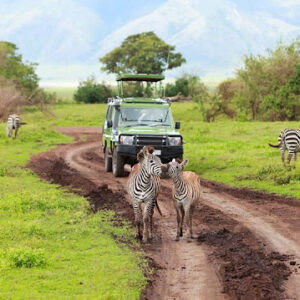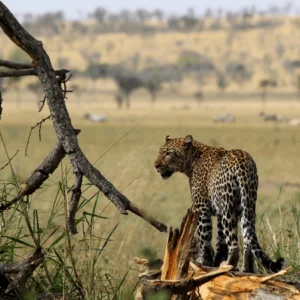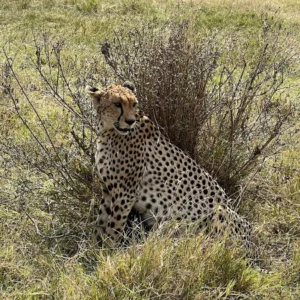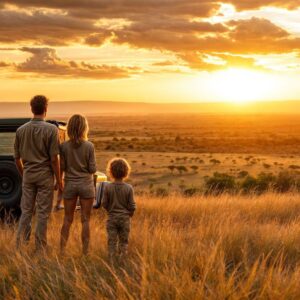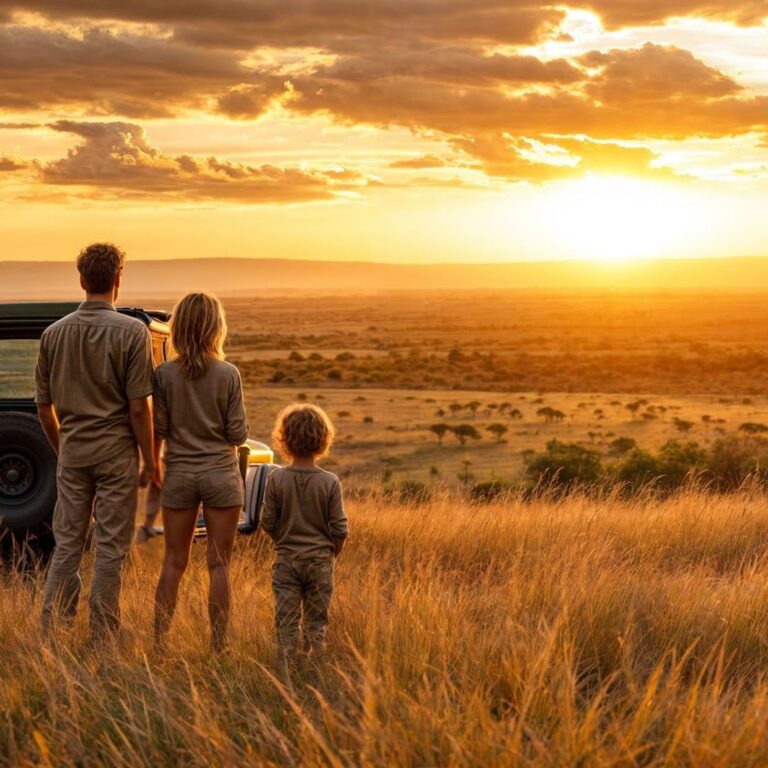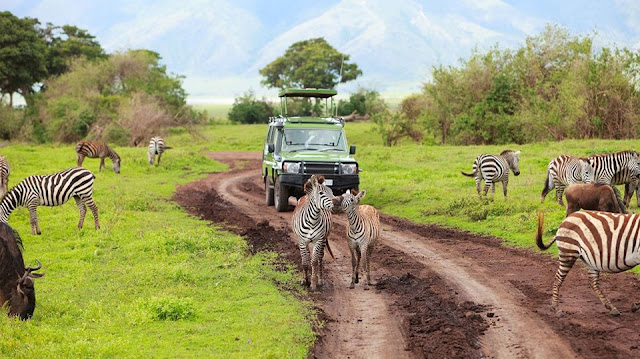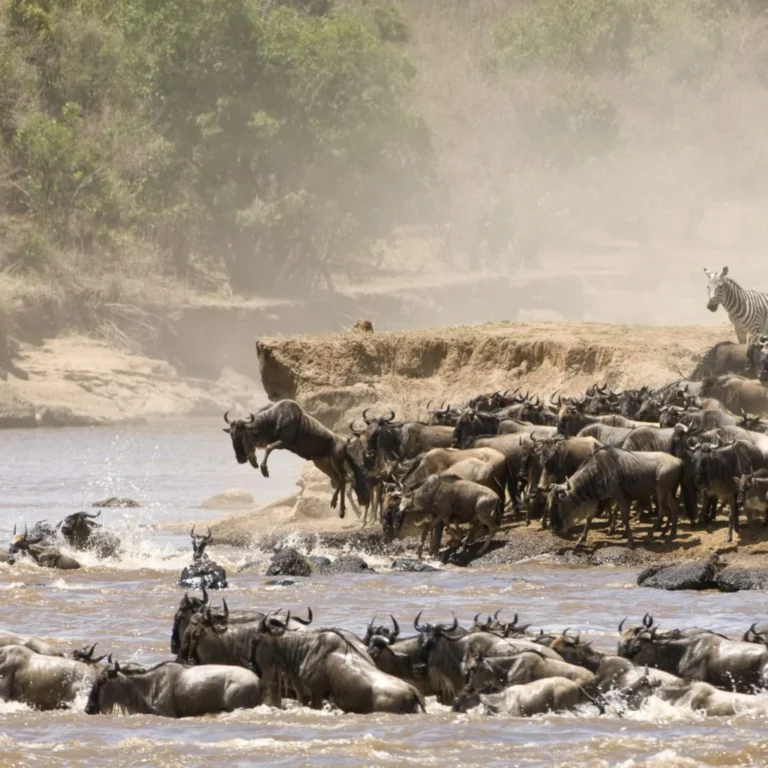Embarking on a safari adventure is an exhilarating experience, and capturing the magnificence of wildlife in its natural habitat demands the best equipment. For those who are passionate about photography, selecting the right camera is crucial. Here, we delve into the finest options available, ensuring you have the perfect gear to document every moment of your safari.
The African safari. It’s a journey steeped in anticipation, brimming with unforgettable moments – the thunder of hooves across the plains, the piercing gaze of a lion, the ethereal glow of an African sunset. These are moments you’ll want to preserve, not just in your memory, but in photographs that truly do them justice. But with a bewildering array of camera gear on the market, how do you choose the best camera for safari photography?
This isn’t just about buying the most expensive gear. It’s about finding the right tools that balance performance, usability, and your personal photographic aspirations. All while considering the unique challenges of the African bush. From the dusty tracks of the Serengeti to the misty highlands of Ngorongoro, your camera will be your companion, helping you capture the wild heartbeat of Tanzania.
Understanding the Key Features Cameras for Safari Photography
Unlock the secrets to capturing stunning safari photography with our guide on essential features. Learn about the best camera settings, equipment, and techniques to photograph wildlife in their natural habitat. Whether you’re a beginner or a seasoned photographer, these tips will help you take breathtaking photos on your safari adventure.
Durability and Weather Sealing. Safari environments can be harsh. Dust, moisture, and extreme temperatures are common challenges that photographers face. Durability and weather sealing are non-negotiable features in a safari camera. Opt for models that boast robust construction and are designed to withstand adverse conditions. Cameras like the Nikon D850 and Canon EOS 5D Mark IV are renowned for their rugged build and weather-resistant designs.
High-Resolution Sensors. The detail in wildlife photography is paramount. High-resolution sensors ensure that every feather, fur, and scale is captured with stunning clarity. Cameras with full-frame sensors like the Sony A7R IV, with its impressive 61 megapixels, offer superior image quality and detail.
Fast and Accurate Autofocus. Wildlife rarely stays still. A camera with a fast and accurate autofocus system is essential for capturing sharp images of moving subjects. Look for cameras with advanced autofocus systems that offer multiple focus points and sophisticated tracking capabilities. The Canon EOS-1D X Mark III and the Sony Alpha A9 II excel in this regard, providing reliable performance in tracking fast-moving animals.
Speed and Burst Mode. The ability to shoot at high speeds can make the difference between missing a moment and capturing a perfect shot. High burst rates are crucial for photographing dynamic scenes. Cameras that can shoot continuously at high frames per second (fps), such as the Nikon D6 with 14 fps, allow photographers to capture a series of images in rapid succession.
Top Cameras for Safari Photography
Nikon D850. The Nikon D850 is a versatile and powerful DSLR that stands out in wildlife photography. Its 45.7-megapixel sensor provides exceptional image quality, while the 153-point autofocus system ensures quick and precise focusing best Safari acmera for an African safari. The camera’s robust build and excellent weather sealing make it an ideal choice for the rugged conditions of a safari.
Canon EOS-1D X Mark III. The Canon EOS-1D X Mark III is a professional-grade camera known for its incredible speed and accuracy. With a 20.1-megapixel full-frame sensor and a dual pixel CMOS AF system, it delivers stunning images even in low light conditions. The 16 fps continuous shooting speed is perfect for capturing fast-moving wildlife. Suitable camera for African safari and wildlife photographyis canon EOS 7D mark 2. Lens 150–600mm from Tamron/ Sigma or. 400mm from Canon Len.
Sony A7R IV. For those who prefer mirrorless systems, the Sony A7R IV is a top contender best camera for safari for beginners. Its 61-megapixel sensor offers unparalleled detail, and the camera’s advanced Real-time Tracking AF system ensures sharp focus on moving subjects. The compact size and lightweight design are added advantages for safari photographers who need to travel light.
Nikon D6. The Nikon D6 is a flagship DSLR designed for professional photographers. It boasts a 20.8-megapixel sensor and an advanced 105-point autofocus system that performs exceptionally well in challenging conditions best camera for wildlife photography. The camera’s 14 fps continuous shooting capability allows for capturing the most fleeting moments with precision.
Canon EOS 5D Mark IV. The Canon EOS 5D Mark IV is a reliable choice for safari photography, offering a 30.4-megapixel sensor and a versatile autofocus system. Its robust build and weather sealing make it a durable option for outdoor adventures best camera & lens for Safari in Africa (all budgets). The camera’s 7 fps continuous shooting speed is sufficient for capturing most wildlife action. Mirrorless Camera Suggestions for Safari The Canon 100-400 is excellent and it’s the quintessential safari lens — you see more of it out there than any other lens among hobbyist.
Essential Lenses for Safari Photography
Choosing the right lens is just as important as selecting the camera. Here are some top recommendations:
Telephoto Lenses. Telephoto lenses are essential for capturing distant subjects. A lens like the Canon EF 100-400mm f/4.5-5.6L IS II USM provides versatility and reach, allowing photographers to zoom in on wildlife without disturbing their natural behavior.
Prime Lenses. Prime lenses offer superior sharpness and wider apertures for better low-light performance. The Nikon AF-S NIKKOR 600mm f/4E FL ED VR is an excellent choice for those who need maximum reach and exceptional image quality.
Wide-Angle Lenses. While telephoto lenses are vital, wide-angle lenses are also useful for capturing the expansive landscapes of a safari. The Sony FE 16-35mm f/2.8 GM lens provides sharp images and a wide field of view, perfect for showcasing the beauty of the environment.
Accessories to Enhance Your Safari Photography
Tripods and Monopods. Stability is crucial for capturing sharp images, especially with telephoto lenses. Lightweight and sturdy tripods or monopods, such as the Gitzo GT3543XLS or the Manfrotto 290 Xtra, are essential accessories for safari photography.
Protective Gear. Protecting your equipment from the elements is vital. Camera rain covers, lens hoods, and durable camera bags will safeguard your gear from dust, rain, and accidental bumps. Brands like Think Tank and Lowepro offer excellent protective solutions.
Memory Cards and Storage. High-resolution images require ample storage. Invest in high-capacity, high-speed memory cards such as the SanDisk Extreme Pro series. Additionally, portable external drives like the WD My Passport Wireless SSD can provide extra storage and backup on the go.
Tips for Capturing Stunning Safari Photographs
Patience and preparation are key. Respect wildlife by maintaining a safe distance. Utilize early morning and late afternoon light for the best natural tones. Apply composition techniques like the rule of thirds. Experiment with different angles and perspectives to add depth and interest to your images.
Patience and Preparation. Wildlife photography demands patience. Spend time observing animal behavior to anticipate the best moments to capture. Preparation includes knowing your camera settings and being ready to shoot at a moment’s notice.
Ethical Photography. Respect wildlife and their habitats. Maintain a safe distance and avoid disturbing animals. Ethical photography not only ensures the safety of wildlife but also leads to more natural and compelling images.
Understanding Light. Lighting is crucial in photography. The best camera for safari photography. Early morning and late afternoon offer the best natural light, providing soft and warm tones. Avoid harsh midday sun, which can create unflattering shadows and highlights.
Composition Techniques. Apply composition techniques like the rule of thirds, leading lines, and framing to enhance your photographs. Experiment with different angles and perspectives to add depth and interest to your images.
What Camera do you Need for Wildlife Photography? For wildlife photography, you’ll want a camera that excels in speed, autofocus, and resolution. Consider these features: fast continuous shooting, a high-quality autofocus system, and a good number of megapixels. Full-frame cameras and mirrorless systems with fast autofocus and high frame rates are often preferred. A good starting point might be a crop-sensor camera like the Canon EOS R7 or Nikon D500.
What camera do you need for wildlife photography on a budget? For an affordable camera for wildlife photography, consider a Canon EOS 7D paired with a Canon EF 75–300mm f/4–5.6 III USM lens, or a Nikon D7100 with a Nikon AF 70–300mm f/4–5.6G lens. Both offer good image quality and reach at a budget-friendly price point, making them excellent options for beginners in wildlife photography.
Is a DSLR or mirrorless camera better for wildlife photography? Eye detection is simply impossible when using a DSLR’s optical viewfinder, and its coverage area is very limited compared to the full-frame focus areas of mirrorless cameras. That’s why mirrorless models are the future of wildlife photography—and it looks like Nikon and Sony have basically given up on DSLRs.
What is the budget Canon camera for wildlife photography? The Canon R8 holds a distinct place in the market. With its impressive low-light performance, high-speed shooting, and advanced autofocus at an affordable price, this camera is arguably the best budget full-frame camera for wildlife photography.
Best camera for wildlife photography beginner. The best camera for wildlife photography beginners is the Canon EOS R50 or Nikon Z50. Both offer fast autofocus, great image quality, and are lightweight—ideal for capturing animals in motion. Paired with a telephoto lens (e.g., 100-400mm), these mirrorless cameras provide excellent range and detail. Easy to use, budget-friendly, and compact, they’re perfect for safari adventures or birdwatching. Helping beginners capture stunning wildlife shots with ease. What camera do you need for wildlife photography for beginners? For beginner wildlife photographers, a good starting point is a camera with a decent zoom lens, fast autofocus, and a good image quality. The Canon EOS R10 and the Nikon D7500 are often recommended as beginner-friendly options. If you’re looking for more reach, consider a telephoto lens like the Tamron 70-300mm or Sony 70-350mm.
Best camera for wildlife photography under $500. The Nikon Coolpix B600 is one of the best wildlife cameras under $500. It best affordable camera for wildlife photography features a powerful 60x optical zoom, image stabilization, and easy auto settings—ideal for beginners capturing distant animals. Its compact design and solid image quality make it great for safaris or nature walks. While not interchangeable lens quality. It offers excellent value and reach for its price, perfect for hobbyists wanting wildlife shots without the complexity or cost of pro gear.
Wildlife photography camera prices. Wildlife photography camera prices vary based on features and experience level. Entry-level cameras like the Nikon Coolpix B600 start around $300–$500, while mid-range mirrorless options like the Canon R50 range from $700–$1,200. For professionals, high-end DSLRs or mirrorless models with fast autofocus and long-range lenses can exceed $3,000–$6,000. Price often includes just the camera body; quality telephoto lenses are an additional cost. Choose based on budget, skill level, and shooting needs.
Best mirrorless camera for wildlife photography. The Sony Alpha a7 IV is among the best mirrorless cameras for wildlife photography. It best mirrorless camera for wildlife photography beginners offers fast autofocus, excellent image quality, and impressive 10fps continuous shooting—perfect for capturing fast-moving animals. Its full-frame sensor delivers stunning detail and low-light performance. Lightweight and durable, it pairs well with telephoto lenses for extended reach. Ideal for enthusiasts and professionals alike, the Sony a7 IV combines advanced features with versatility for breathtaking wildlife shots.
The Safari Photography Challenge: Why It’s Unique
Before diving into camera types, it’s crucial to understand what makes safari photography different:
Distance. Wildlife is wild. You won’t always be close, so telephoto reach is paramount. Light Conditions. Early mornings (low light, golden hour), harsh midday sun, late afternoon, and sometimes even night drives – your camera needs to handle a wide dynamic range. Dust and Bumps. Safari vehicles kick up dust. Roads can be rough. Your gear needs to be robust. Fast Action. A leopard pouncing, a cheetah sprinting, a bird taking flight – you need fast autofocus and high frame rates. Battery Life. You’ll be away from power outlets for extended periods, especially in tented camps. Limited Time. Wildlife moments can be fleeting. You need a camera you’re comfortable operating quickly and instinctively.
Final thought
Choosing the best camera for safari photography involves considering various factors such as durability, sensor resolution, autofocus capabilities, and shooting speed. Whether you prefer DSLRs or mirrorless systems, options like the Nikon D850, Canon EOS-1D X Mark III, and Sony A7R IV offer excellent performance for capturing the beauty of wildlife. Coupled with the right lenses and accessories, these cameras will enable you to document your safari adventure with stunning clarity and detail.

